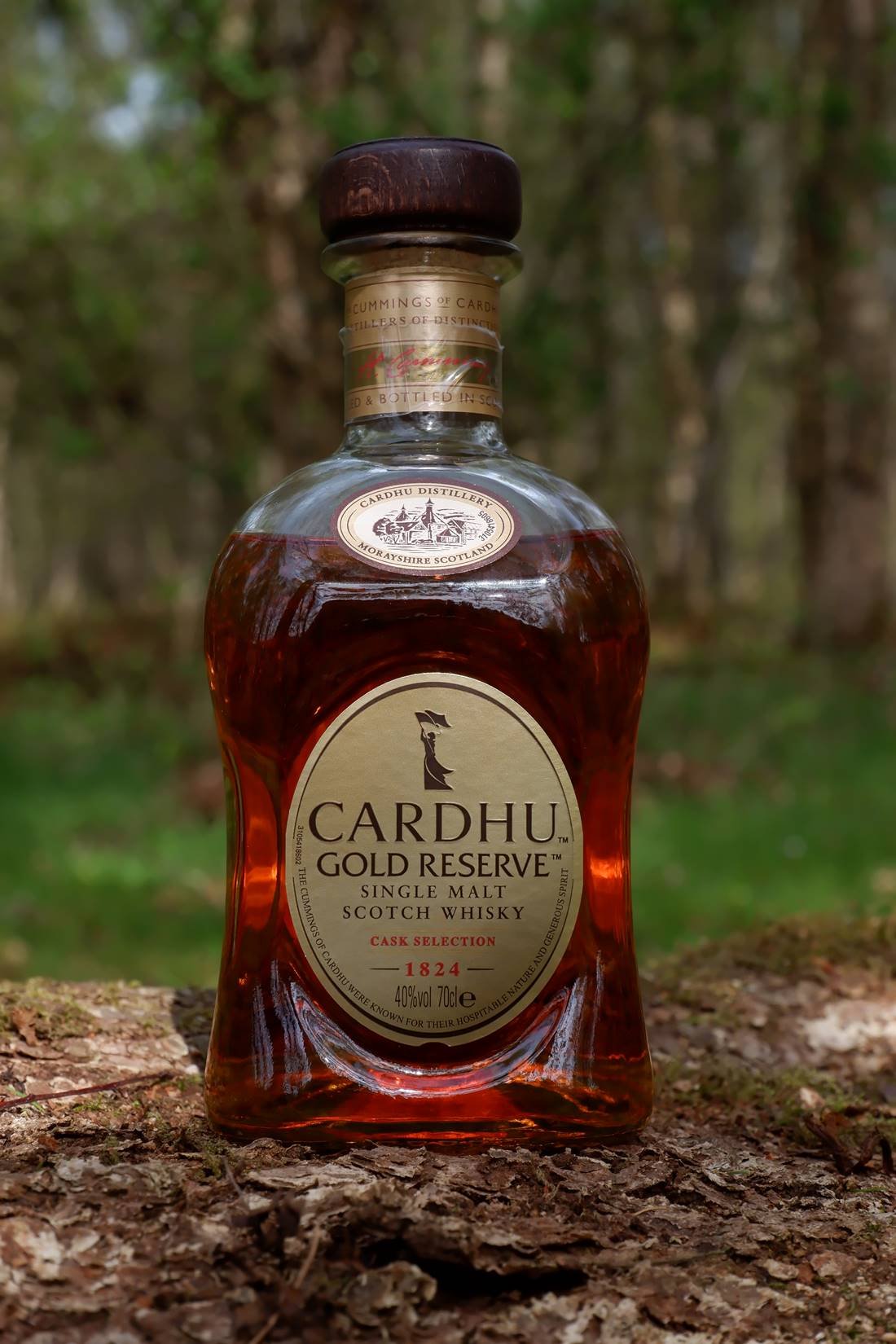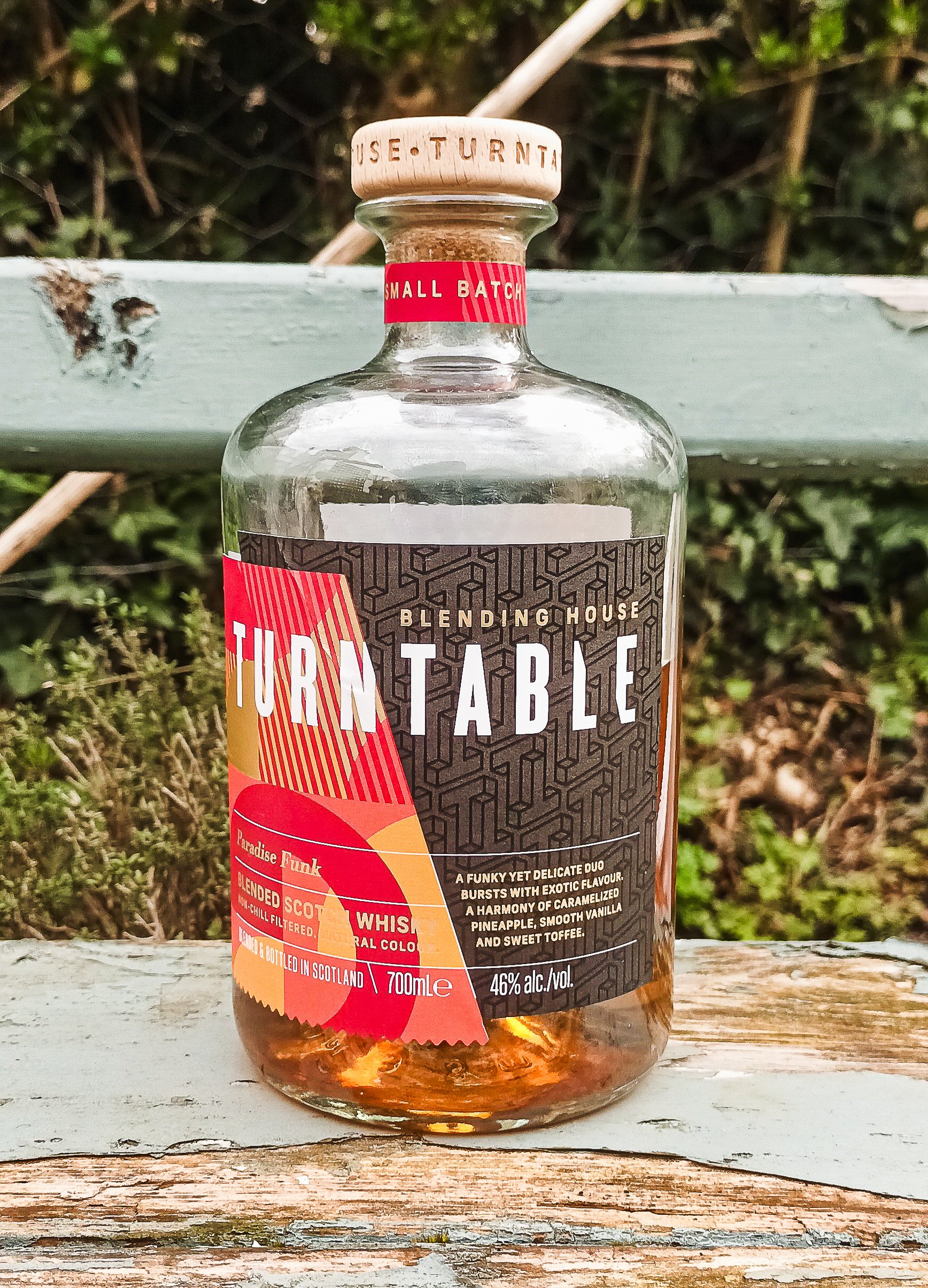Cardhu Gold Reserve
Official Bottling | 40% ABV
Score: 5/10
Average. In a Good Way.
TL;DR
A very safe pair of hands.
Hearts Driven By A Fever For Pure Gold
All gifts are generous and gratefully received. Some gifts are more generous than others, but it's the motivation and desire behind them that really matters.
So, yes, I was given this bottle of Cardhu Gold Reserve as a thank you. Now, it's easy to turn your nose up at Cardhu, or at least the modern equivalent. At the heart of the Diageo stable, it is a distillery we're more likely to see in blends rather than supported by the independent sector. A distillery with a rich initial history, that has fallen by the wayside compared to some of its Speyside relations in recent times
The arrival of this bottle is an opportunity to reflect on my last encounter several years ago and revisit the contents. The most likely environment you'll see Cardhu is at the supermarket or during a wander through the duty-free section at an airport. Its popularity in Spain and France, ensures a healthy presence when venturing into Europe and the rediscovered joys of passport queues.
Unsurprisingly, I always associate Cardhu with travel. Whether it's a visit to the distillery or searching for that foreign destination that offers a much-needed rest. Cardhu for many, is a simple whisky that offers value - yes, that theme again - and ticks enough of your whisky boxes to satisfy. I believe these qualities are important, especially during an era of single malt snobbery, investment and hey, look at me with this bottle...
The last whisky I had prior to this Cardhu, was a 1979 40yo Glen Albyn, so quite the gear change. And as I said, it's easy to dismiss Cardhu and its ilk with features that disappoint most enthusiasts including artificial colouring and chill filtering. Then, the eternal bugbear for many of 40% strength. Now, I'm probably going against Dramface philosophy here - rules are made to be flexed imo - but all of these features depend on the whisky.
I'm not a fan of colouring at all. The chat being you cannot taste it - I'd disagree for something that is sugar based, there is a taint when it is overused. It brings consistency is the justification. For Cardhu, it matches the label colour scheme, but at this price point, I sincerely doubt you're buying based on colour or even care about it.
We all know the reasons for filtering and the compounds it removes. A whisky can lose its presence and body, or at least be a shadow of its former self. The subtraction of an additional quality that makes it known to a new segment of the market; but it must be said, not the majority of the market. Cardhu you could argue is more of a beginner malt, where you can begin to understand the single malt dynamic, before embarking on your own voyage.
This brings us back to 40%. I'm not as hung up on strength as you might expect. There are whiskies that can still carry themselves at this level, but they are few and far between. Older styles of distillate could carry themselves in certain examples, with the original Gordon & MacPhail Connoisseurs Choice proving the point occasionally.
We've lost that ability nowadays. Standardisation brings its sacrifices for consistency. Efficient grains bring that extra yield at the loss of flavour and texture. Shorter fermentations and hard stills. These features mean that this no age statement single malt comes in circa £25 at the supermarket. Possibly even less at travel retail. A perfect fit for its intended market.
Even with that connection, at least initially, there isn't much scope to explore Cardhu further. The indie sector is off limits and to try a more natural expression, you have to jump up to one of the Special Releases. Quite the leap of faith from a pricing perspective and given their availability years after release, a jump not many have tried. And that's by design. Cardhu isn't alone in being shackled by its master, as you can include Dalwhinnie and Glenkinchie to the list amongst others. I sometimes think of whisky distilleries as pieces on a chessboard. Deployed and sacrificed by rulers for their own agenda and strategy. Cardhu would in this alternate universe, be a simple pawn; the foot soldier.
“When John Cumming first licensed his Cardhu distillery in 1824, he had a string of convictions as a whisky smuggler behind him. Such brushes with the law seem to have been the equivalent then of parking on a double yellow line today. They even became a kind of alternative pedigree and at Cardhu the court judgements are framed and hung proudly on the wall of the distillery manager’s office.”
The distillery has a historical legacy, back to the formation of the Scottish whisky industry that we see today. The arrival of the Excise Act in 1823 was the catalyst for several inventive distillers to embrace a new frontier. Subject to payment of a modest initial fee, and tax on every gallon of alcohol produced, a distilling licence was granted. This prompted a new influx of talent into distilling, many of whom already had a connection such as blending or as grain merchants. Farmer John Cumming, was one to seize the opportunity and there is proof that prior to 1823 he was involved illegal distilling. It is believed that the site of the distillery was being used in 1811 to produce whisky, with famously, the assistance of his wife to warn him when an Excise man was nearby.
Cardhu or Cardow to give it its original name, has always been a vessel for change. Those of you with long memories will recall its dubious appearance as the Cardhu Pure Highland Malt Scotch Whisky in 1982. It looked like the Cardhu single malt but it wasn't. Featuring malts vatted from several Speyside distilleries it eventually prompted outrage from certain elements in the industry and confusion from consumers.
William Grant and Sons were especially incensed, as this Independent article from 2004 summarises. The while dispute brought change to the industry and clarification. Although since, I believe that Diageo has learned to pick its battles more diligently. Setting up a task force to ensure a positive outcome and wielding its considerable influence more effectively. Such is the nature of whisky chess.
I await the day that a Cardhu wins me over and remain optimistic that it'll come. While I'm not optimistic about this Gold Reserve, an open mind is always the best approach, so let's begin.
Review
Artificial colour, chill filtered, 40% ABV
£25 or thereabouts on special, widely available
Nose
Orange peel underlines the citric element, apples and toffee. There’s a simplistic nature here and no sense of depth, which isn’t unexpected given the positioning of the malt and pricing. Popcorn, green peppercorns, polished wood and honeycomb rounds off the core aromas. A twist of lemon. Pencil shavings, cinnamon and earthy ginger.
Palate
Quite flat and one dimensional. There are echoes of flavour, remnants almost and ghostlike. More toffee notes mixed with honey and orange. Pleasant and made for simple sipping. A little chocolate on the finish. Some flashes of tanginess and texture flourishes – just it never takes off.
The Dregs
Well, this isn’t as bad as I initially feared. In fact, I’d probably pitch it above the 12 year old statement which is the next entry in the Cardhu range. It just has a freshness and vitality that’s lacking in the more mundane 12. But the whole experience underlines the safe setting that the whisky has positioned itself to fill. Not enough to wow you or turn you off whisky. It is just there and fairly content to occupy the middle ground.
With this comes a sense of frustration. Cardhu is one of the original trailblazing distilleries, yet it feels unable to spread its wings and break free of the shackles. Scotland does have some dreary and unimaginative single malts. Some by design, others by accident. Yet in Cardhu’s case, you know that it is well made and loved by the workers who help create it – just the final pass is botched by spreadsheets and market segments. Diageo should give us more, especially as other single malts such as Lagavulin and Talisker become unaffordable for many enthusiasts, there is a gap forming.
Score: 5/10
Tried this? Share your thoughts in the comments below. DM
-
Dramface is free.
Its fierce independence and community-focused content is funded by that same community. We don’t do ads, sponsorships or paid-for content. If you like what we do you can support us by becoming a Dramface member for the price of a magazine.
However, if you’ve found a particular article valuable, you also have the option to make a direct donation to the writer, here: buy me a dram - you’d make their day. Thank you.
For more on Dramface and our funding read our about page here.
































